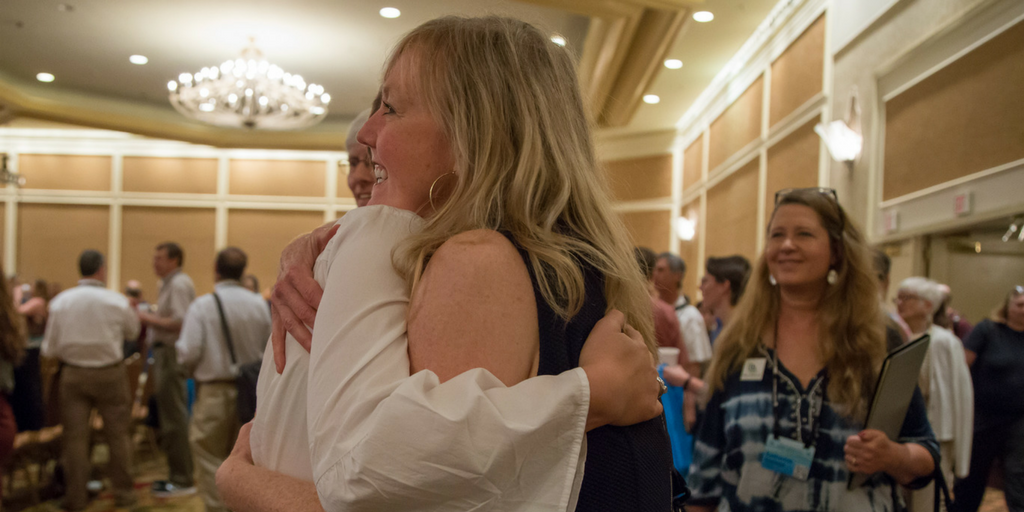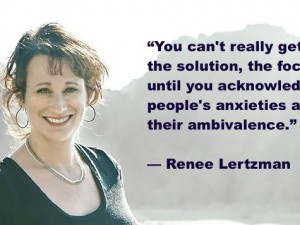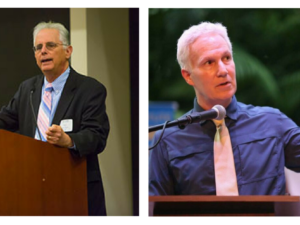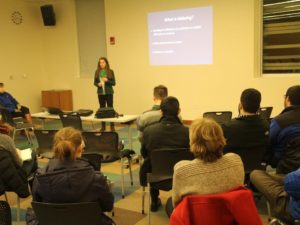How to organize people and achieve your purpose
By Flannery Winchester
We’re at a crucial political moment right now—and a crucial environmental one. Experts say we have about three years left to prevent the worst effects of climate change. Meanwhile, we have an administration in the White House that has abdicated its responsibility to climate leadership entirely. So it’s up to us: the people. We have to work harder and smarter to achieve our goals of a carbon price and a stable, livable world.
At CCL’s national conference in June, Hahrie Han spoke to attendees to explain how we can better engage and motivate people to achieve those goals. Han is the Anton Vonk Associate Professor of Environmental Politics in the Department of Political Science at the University of California, Santa Barbara. Her keynote address explored the idea of transformational organizing and how social movements help ordinary people achieve their purpose. Watch her full talk below, or read on for the recap:
Importance of transformation
Han began her talk with some background about her family. “I grew up as the daughter of Korean immigrants in Houston, Texas,” she said. Her parents arrived in America in 1972 as war refugees. She saw them make a huge effort to assimilate and be “as American as possible,” right down to taking the kids to Mount Rushmore and to national parks. It taught her a crucial lesson, she said. “Transformation is not only possible; it’s a way of life.”
“A lot of what we do as human beings is try to remake ourselves and remake the world around us so that we can create the world we want for ourselves, for our families, and for our communities,” Han said. That prompted a question: “How is it that movements work to transform society?” The issue might be climate change, civil rights, or any number of things, but the root question is the same—how do these huge transformations actually happen?
A problem of power
Sometimes problems have a technological fix, Han explained. “For example, when we were trying to eradicate polio, what we really needed was a vaccine. Until we had the vaccine, we didn’t have the technology we needed to make the change we wanted.” Some problems simply need awareness: give people information about the issue, and they’ll fix it.
But other problems are problems of power. “Problems of power are when people who need or want the change the most don’t have the authority to make it,” Han said. This is the kind of problem that needs a movement—and it’s exactly the type of problem that climate change presents. “The people who want the change the most—in terms of climate, maybe it’s our grandchildren, maybe it’s our children, maybe it’s the people in front-line communities. These are all situations where people who want the change the most don’t necessarily have the power to make it.”
With a movement, those people can transform what they do have into what they want. “Social movements are a process of taking the resources of ordinary people—our capacity to meet with our legislators, our capacity to engage with other people in our community, all of these are resources we can bring—and when we put them together, it allows us to begin to make the change.”
Mobilizing versus organizing
So we know we need to pool our resources and create the power to make change. But what makes people stay engaged in that process, instead of signing a petition once and disappearing? American organizer Saul Alinsky famously said, “There are two sides you can be on. You can either be on the side of organized people, or organized money.” That’s the key: organizing. You may think of organizing as knocking on doors, dialing phone numbers, and other common get-out-the-vote type activities. Actually, Han explained, that’s more like transactional mobilizing. Instead, what you want for a powerful, lasting movement is transformational organizing.
“You can imagine that there are different rungs on an activist ladder,” Han said. In CCL’s ladder, for example, “At the bottom there are people who just say, ‘Sure, we’ll get your emails, but we’re not going to fly to D.C. for a conference.’ And at the top of the ladder are people who actually run the groups in the communities and take responsibility for engaging others.” The difference between mobilizing and organizing is that mobilizers essentially let people self-select where they want to be on that ladder. Whether they want to attend a webinar or make a few calls, a mobilizer says, “Great!” and lets them get to it. An organizer, on the other hand, goes a step further and says, “Great! We’re going to take you in and cultivate your capacity to do more.”
Through organizing, Han said, people constantly develop their agency and move up the activist ladder. Organizers also challenge people to work together. We know it’s easier to work alone, Han said. “But we don’t become transformed in isolation. We become transformed when we’re in relationship with others.” Working together rather than in isolation is a key feature of organizing that keeps people more involved over the long term.
Achieving your purpose
“Martin Luther King, Jr. famously defined ‘agency’ as ‘the ability to achieve purpose,’” Han said. Often, people think of agency as a feeling—do I feel like I’m someone who makes a difference? But social psychologists say that agency isn’t just about confidence, but it’s also about autonomy. It’s about having the opportunity to act on your purpose. “And that’s where groups like CCL are so important,” Han said, “because what CCL does is create opportunities for people to act and to learn how to achieve their own purpose.”
That’s huge, because people’s sense of their own agency in politics has been declining over the past 50 years. By cultivating people’s power and raising that agency back up, groups like CCL can eventually engage enough people in the right ways to create the transformation we need.
Han wrapped up her talk by reminding us of the political moment we’re in. “Not only in the United States but all over the world, we’re seeing the rise of this different kind of politics, where there’s so much uncertainty. There’s so much changing. On the one hand, we see this weave of protest activity, of people who want to get involved.” But what should we do with all of that energy? Our challenge now, she said, is to shift from being united around resistance to being united around a common purpose. We have to define not just what we’re working against, but what we’re working for. And then, together, we begin to transform ourselves and our world.






